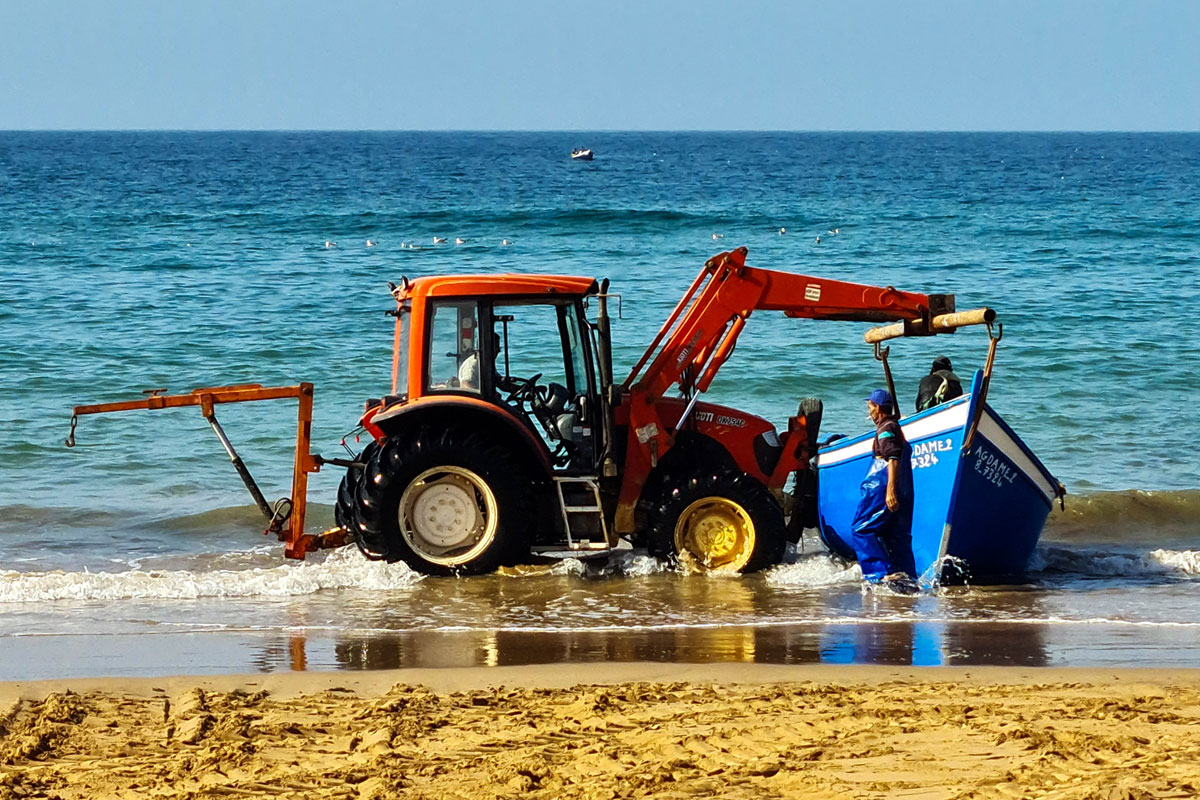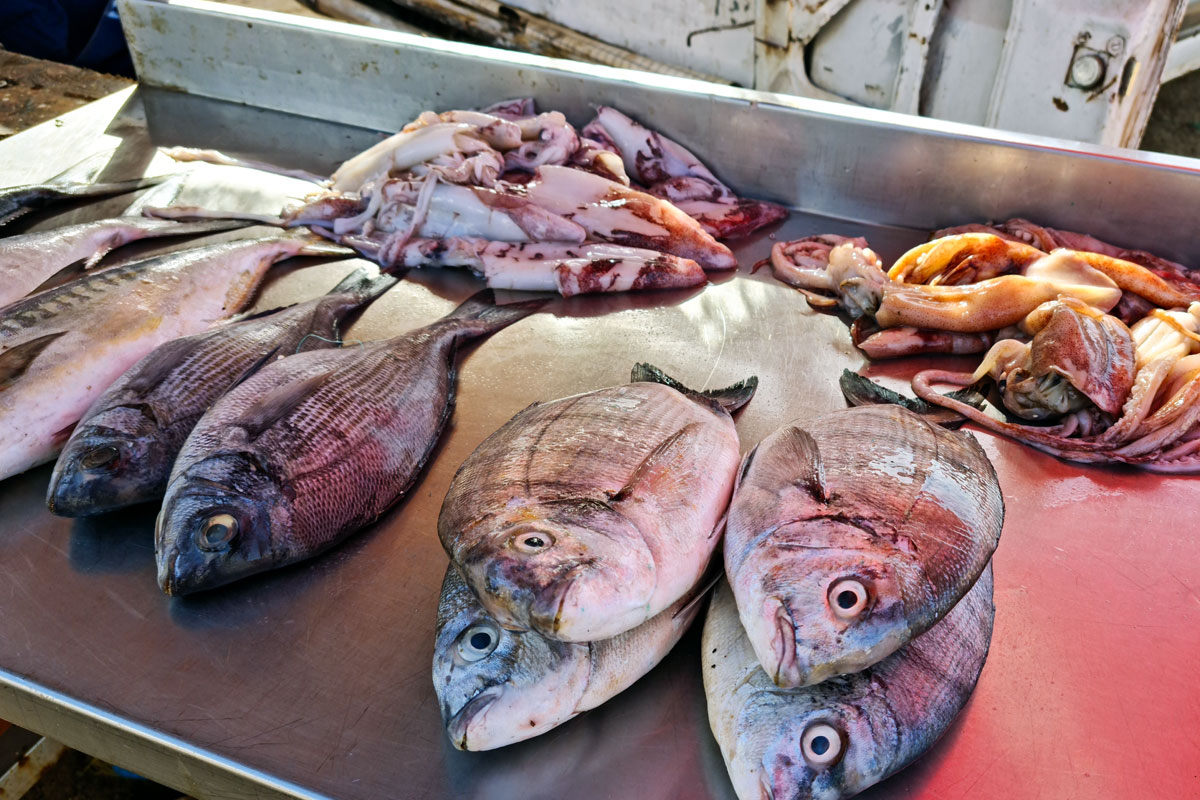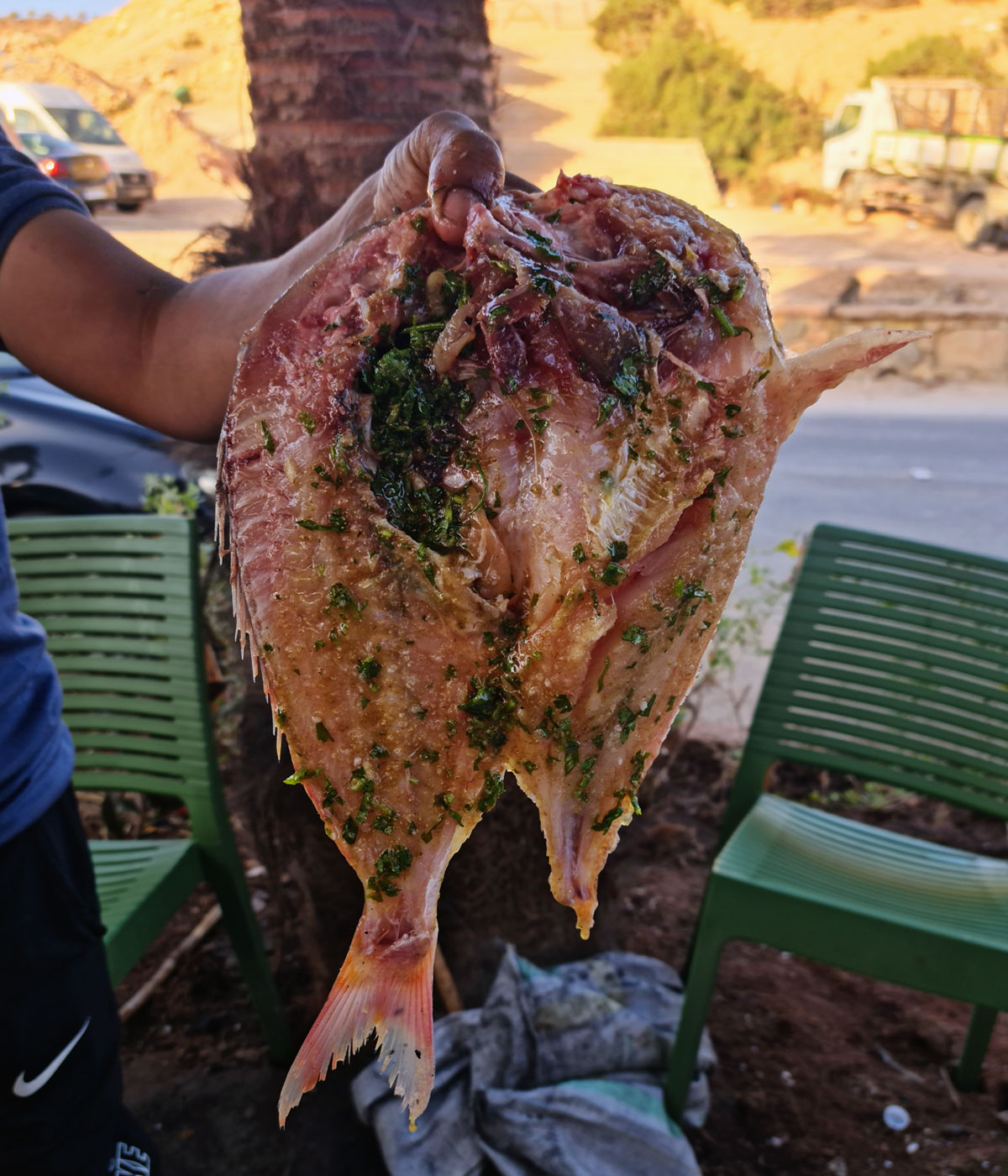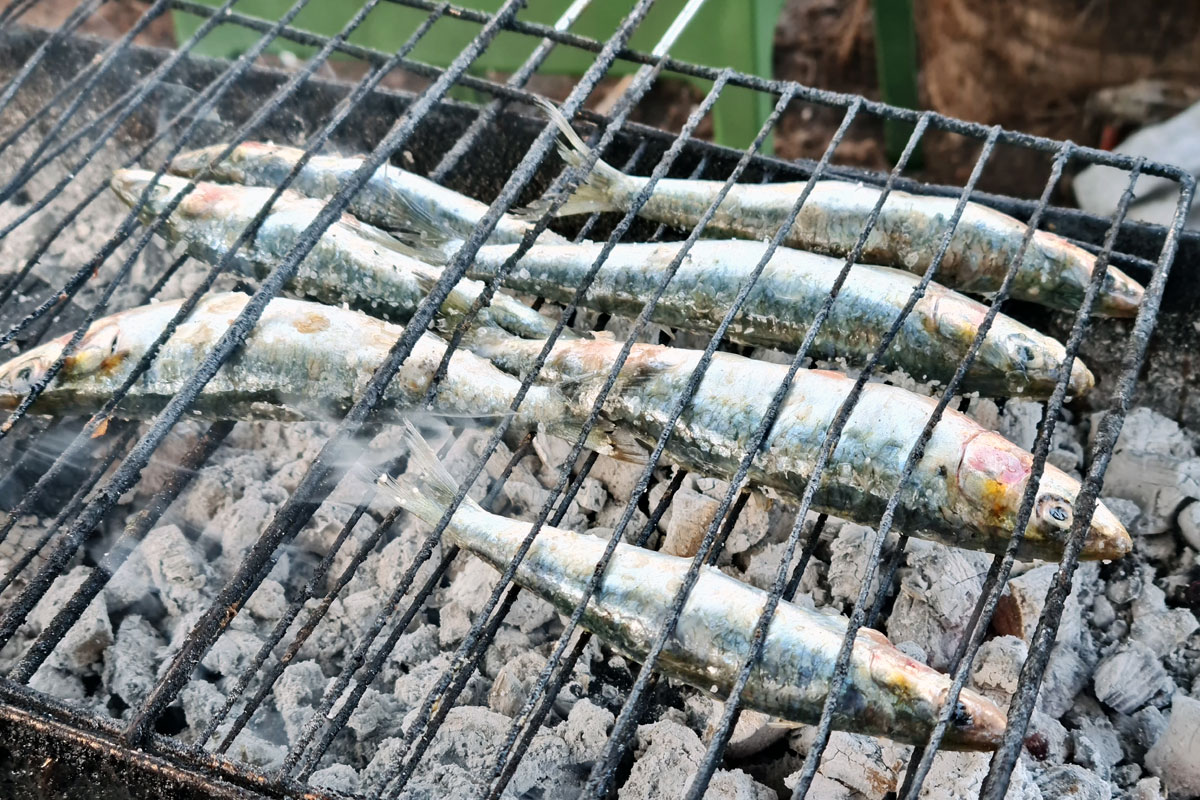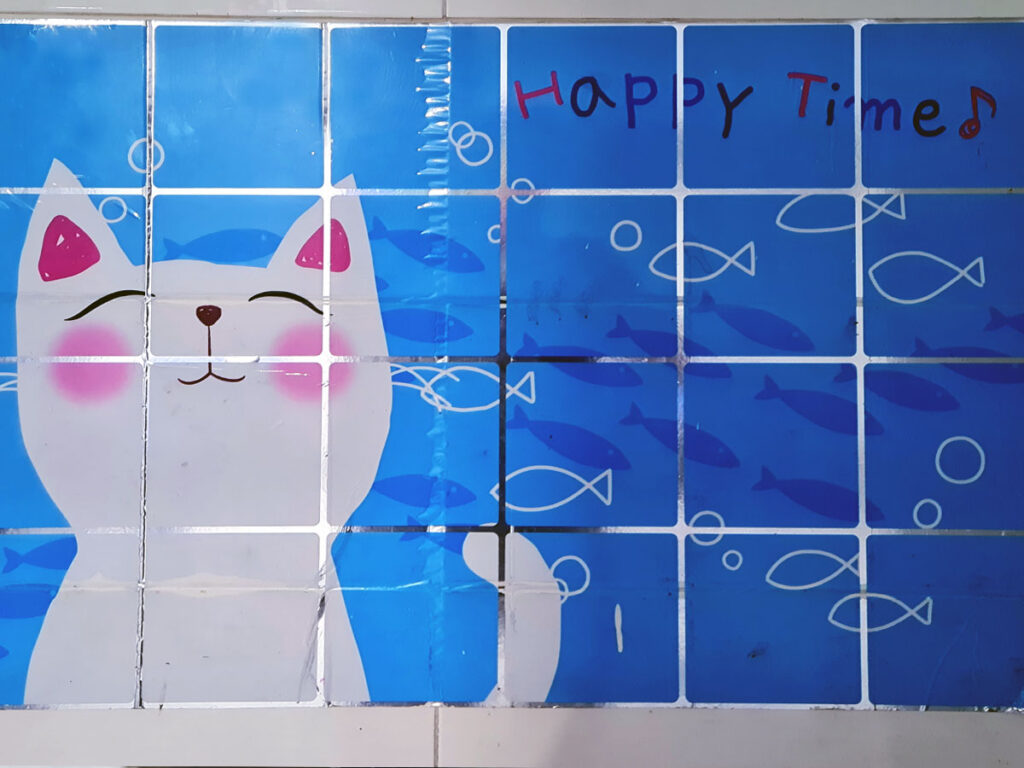
Last updated: 10 May, 2025 @ 12:11
It’s a little after 9.30am, and all seems quiet in the little village of Taghazout, on Morocco’s Atlantic coast.
The transient surfing crowd, drawn to the village from late October by the promise of good waves and a fair climate, is nowhere to be seen. The sound of shopkeepers’ voices, catching up with the morning’s gossip, echoes through the small, cool alleyways winding their way down to the beach.
The village’s sleepy-eyed stray cats, their appetites growing, know where to go this time of the morning. Follow them, and you’ll find the Taghazout fishing fleet – landing its catch straight to the tiny beachside fishmarket.
A handful of traders have set up stall, and the first of the morning’s fish – mainly gilthead bream – are already on display.
“It’s not good today. Yesterday was better,” Paul, a wrinkle-free Frenchman in his early 50s, who left France for a quieter, better life, tells us. “Watch out. Here comes another boat.”
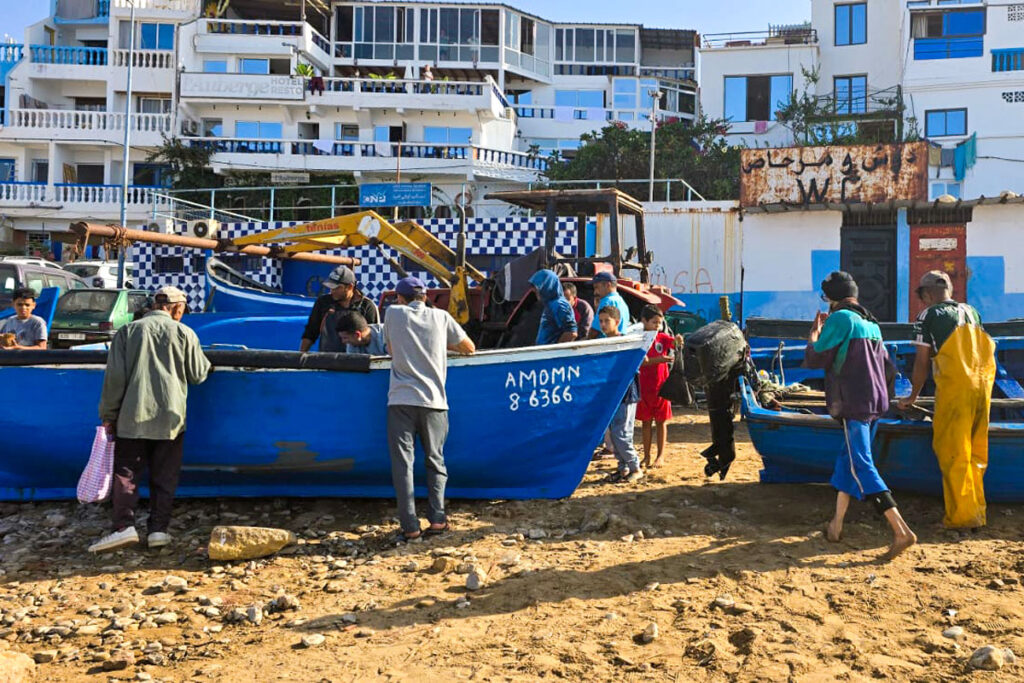
Taghazout fishmarket: Fresh catches from Morocco’s Atlantic coast
The small, blue-and-white-painted, open, wooden-hulled boats are unceremoniously scooped up from the shallows by the fleet’s solitary tractor and lifted across the beach to the pop-up fishmarket.
With the boat firmly on the soft, golden sand the buyers gather – eager to get their hands on the best of the catch, which is sold stiff-fresh, straight from the vessel’s cluttered deck.
The buyers are coy, seemingly unimpressed with the quantity of the catch, and size of the few albacore and bonito tuna staring upward from the wet, wooden planks of the deck. Two young boys run off with a couple of small sardines, bait for their own day’s fishing.
The next boat landed fares little better, with the collection of mean-faced chub mackerel and a solitary red porgy being the only fish drawing any attention.
“Maybe tomorrow will be better,” said Paul, before returning to sip a soft-pink coloured smoothie on the terrace of a nearby beachside café.
Fresh fish, simply cooked
By lunchtime, the beaches of Taghazout Bay, stretching 5km or so southwards to Banana Point, are busy with early-career surfers, practising in the small but perfectly-shaped swell.
Moroccan families gather to relax – whilst nearby, their freshly-prepared tagines simmer over hot coals.
The occasional camel saunters past, its face etched with contempt, seemingly aware of the undignified, smartphone-wielding tourist on its back.
Back in the village, the grills are smoking – the promise of lunch glowing in the fresh embers of hot coals.
Fish, which just a few hours earlier were changing hands at the beachside market, are laid over ice – their gleaming eyes and stiff appearance all that’s needed to entice a customer into one of the few small restaurants.
The tuna is there, as is the gilthead bream, chub mackerel and red porgy. Alongside sit fresh, plump prawns, small octopus and glistening sardines – which are cooked whole, ungutted over hot coals, aided by nothing more than a flurry of sea salt and a downpour of lemon juice.
A pair of black bream are butterflied from the top down. The chef, cigarette in one hand, moves about the fish with the skill of a master fishmonger. Before placing them on the grill, he brushes the fish with a vibrant green marinade. “Spicy,” he says. “Very spicy.”
Once cooked, the fish is served with sliced red onion and a wedge of lemon – nothing more. Here, the fish is the undisputed star of the show – what more is needed?
With the fish on the plate, the green marinade is no longer green, and no longer spicy. However, the heat of the coals has somehow enabled the marinade to almost caramelise, making the flesh easy to pull away from the bone with the hand – an important factor in an Islamic country.
Fingertips are also the ideal tool for the hot, oily sardines – again, accompanied by only sliced red onion and lemon.
Agadir – the city’s seafood
The following day, we left behind the quiet alleyways of Taghazout and ventured south to the city of Agadir, where the pace may quicken, but the seafood remains just as simple – and delicious.
Agadir has a large fishing fleet, from small single-handed vessels to trawlers and netters. For an hour or so after sunrise, the horizon is dotted with vessels making their way back to port – a place now, for reasons unknown, strictly off bounds to inquisitive visitors.
“Go back to the city,” said the moustached policeman confused by our request to see the city’s port and its fishmarket.
“Go to the office, back in the centre of the city” he said, but which office, he didn’t reveal.
We never found ‘the office’ but that didn’t matter, and come evening, with this city of almost 500,000 people calmed under an enchanting west African sunset, we ventured out, on foot and on the search for seafood.
We walked for 30 minutes or so, passing the occasional little café from where the refreshing scent of mint tea lingered, while in the distance, the melodic call to prayer hitchhiked on the growing breeze, pricking the ears of a nearby pack of stray, muscular dogs.
Moroccan hospitality and seafood tagines
“My name is Khalid,” said a young, friendly-faced young man, pointing to the name printed on his pristine white-and-blue waiter’s shirt.
“You are very welcome here – please,” he said, gesturing to a curb-side table outside Mini Pecheur a small, canteen-style eatery in part of the city where few tourists find themselves.
As slight as a feather, Khalid danced among the tables – pouring a soft drink here, delivering a Moroccan salad there.
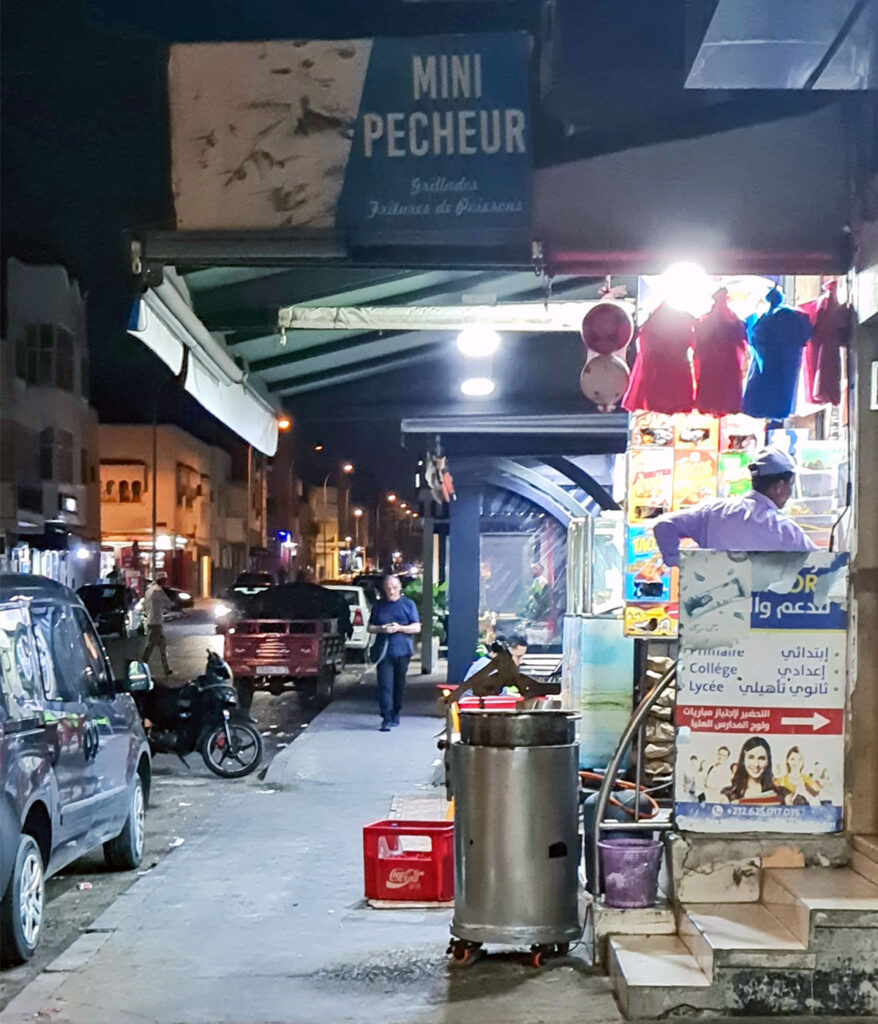
Occasionally, he would jump on the restaurant’s battered old, moped kick it into action and tear off down the dimly-lit street – disappearing, before returning moments later with some fresh eggs or a box of tea.
“I work from 11am to 11pm, Monday to Sunday” he told us, whilst delivering to our table a small basket of discus-shaped, freshly-baked bread, swiftly followed by three dips: lentils, tomato, and chilli. It was a fine feast in itself.
“Only at Ramadan do we close,” said Khalid.
As a well-bearded elderly man in a strikingly gold-and-azure-blue coloured kaftan – seated at one of the 10 or so tables inside the canteen – expertly worked his way through a fish tagine, whilst keeping one eye on the football match showing on the television hung high in the corner, our fritto misto arrived.
A pair of butterflied sardines, lightly dusted in seasoned flour lay under small, fragrant prawns – eaten whole, heads and all, squid rings and sliced and fried aubergine.
The chef, a tall, quiet man, kept a discreet eye on us, keen to know if we’re enjoying his food. He needn’t have worried, and as Khalid brought another round of bread and dips, it was hard to believe life could get any better – but better it did.

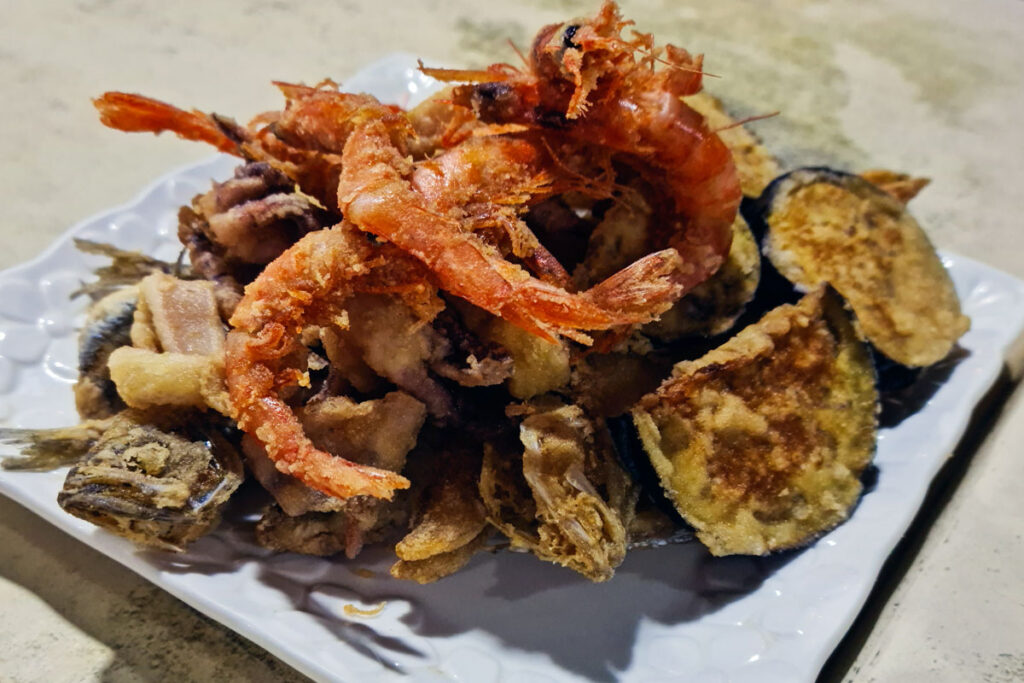
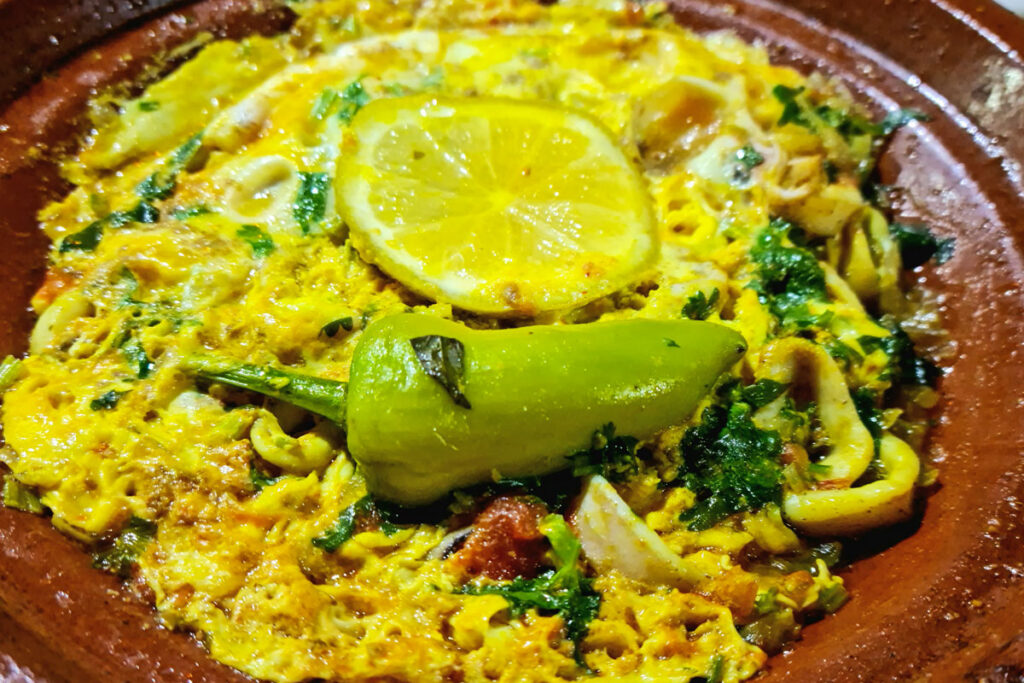
Tagines lined up over hot coals on the counter like cone-helmeted parachutists waiting to leap from a plane. Before long, one leapt – our way, a supreme squid tagine into which an egg had been scrambled, making it far easier to mirror all those happily eating away with their hands inside the now full canteen.
Under the confines of the steamy tagine the squid had been perfectly cooked – each soft and buttery mouthful testament to freshness and simplicity.
The dish would have been the perfect end to the flawless meal – but for one thing – it wasn’t quite the end.
Khalid appeared once more, balancing a tray of sweet, fragrant mint tea with the grace of a matador and his cape.
He placed the tray down, before dashing off, returning moments later with two prettily-painted ceramic bowls full to the brim with roasted chickpeas and shelled and roasted monkey nuts.
Despite his English being as broken as our French, and the restaurant being at its busiest, Khalid proceeded to tell us how to make the perfect Moroccan tea, including a demonstration of how to correctly pour the tea – from a great height – into the glass, and then back into the teapot – a process which must be repeated another two times.
“You liked the food?” he asked. “It was good?”
Sea-to-plate – the authentic way
It was more than good. In fact, it was an honour to experience both a magnificent meal and such heart-warming hospitality.
The meal, along with witnessing the landing of the morning’s catch in Taghazout, also demonstrated that seafood and fishing are still integral to communities, both large and small, along the length of Morocco’s coastline.
From sea to plate isn’t a fashionable new marketing initiative, and fresh fish, simply cooked isn’t a slogan.
In Morocco, it’s the wonderful reality.
Further reading: Fish Face Seafood Blog in Thailand
Read about the Fish Face Seafood Blog trip to Thailand, including our visit to Bangkok’s Chinatown district, and our thoughts on cuttlefish-flavoured crisps.
Share this Fish Face Seafood Blog article.
